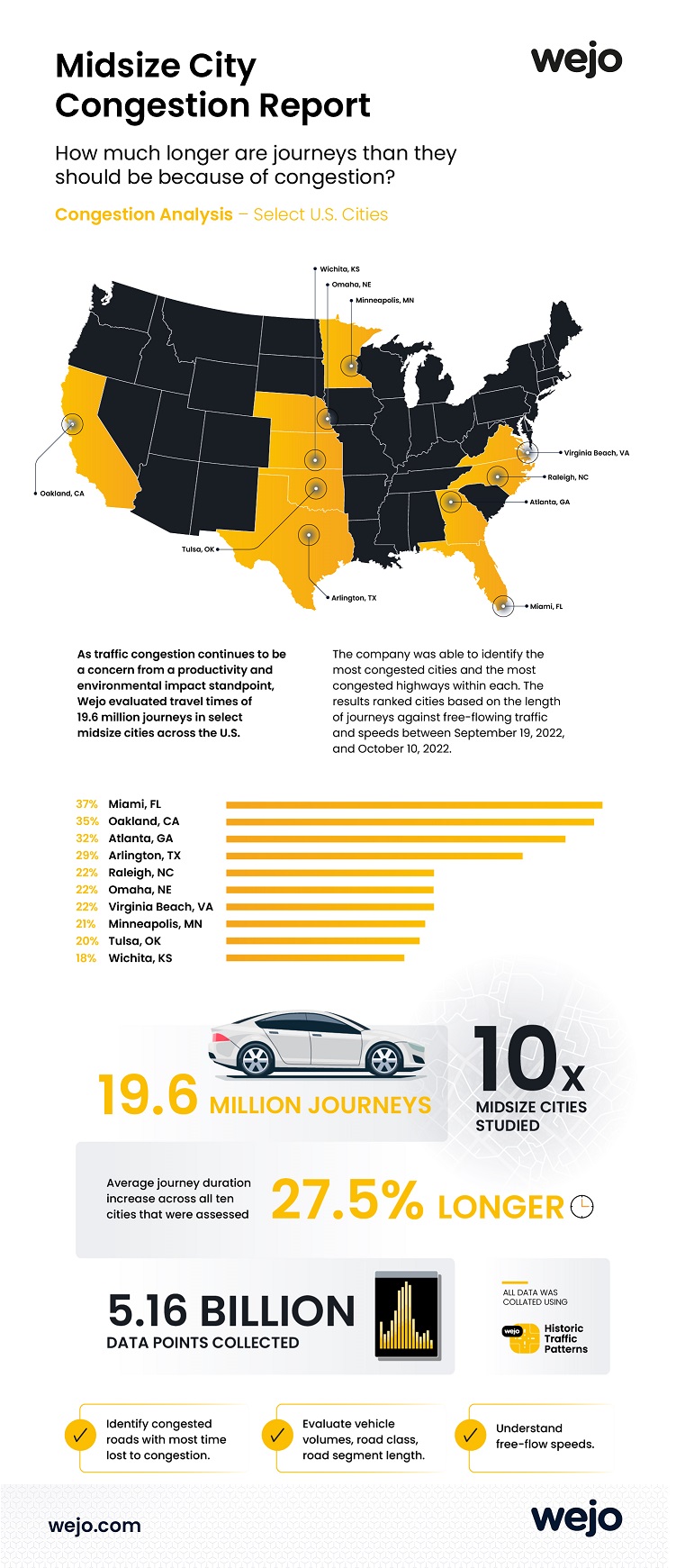The average journey across ten US cities with populations ranging from 390,000 to 500,000 is 27.5% longer due to today's congestion levels, according to new research from Wejo Group Limited.

Wejo evaluated travel times of 19.6 million journeys across Miami, FL; Oakland, CA; Atlanta, GA; Arlington, TX; Raleigh, NC; Omaha, NE; and Virginia Beach, VA to understand congestion conditions based on vehicle speeds and times with free-flowing traffic. Mid-sized cities have become increasingly popular and according to the 2020 US Census, US metro areas grew by 9% from 2010 to 2020.
"Driving into daily congestion causes loss of time, leading to decreases in efficiencies, increases in emissions, and risk of accidents posing greater risks on both our environment and our safety," said Sarah Larner, EVP of Strategy & Innovation at Wejo. "Through this data, DoTs can identify roads with the most time lost due to congestion and evaluate vehicle volumes, road class, and road segment length to make infrastructure investment decisions to improve road traffic and safety. Drivers should also be mindful of the more dangerous and congested road segments to better plan and modify routes for daily commutes."
The findings were based on the results of 5.16 billion data points from over 19.6 million journeys across the cities in the United States.
Key findings include:
■ Midsize cities experience 18% to 37% longer journeys on average:
- Miami, FL (37%)
- Oakland, CA (35%)
- Atlanta, GA (32%)
- Arlington, TX (29%)
- Raleigh, NC (22%)
- Omaha, NE (22%)
- Virginia Beach, VA, (22%)
- Minneapolis, MN (21%)
- Tulsa, OK (20%)
- Wichita, KS (18%).
■ Miami, FL, had the highest congestion levels: Miami journeys are 37% longer than they should be due to congestion. I95/I395 junction and State Road 1 in Miami experience the most traffic. The data also revealed that traveling after 6 p.m. on Thursday evenings could save drivers up to four hours per year for a 30-minute commute.
■ Wichita, KS, had the lowest congestion levels: Wichita is the least congested city of the ten assessed, with journeys taking only 18% longer due to congestion.
■ Cities experience heavier congestion during the evening rush: Across the ten cities, journeys from 4 p.m. to 7 p.m. (evening rush) are 1% to 11% longer than journeys from 7 a.m. to 10 a.m. (morning rush). The city with the most significant journey length increase from morning to evening is Atlanta, GA (11%).





